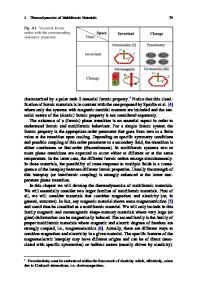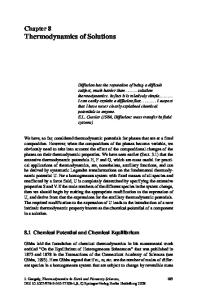Thermodynamics of Enzyme-Catalyzed Reactions
Chemical thermodynamics is the science that deals with transformations of matter and energy. As such, it has found wide scientific and industrial applications in treating chemical reactions and processes. The important practical side of this discipline is
- PDF / 84,162,813 Bytes
- 743 Pages / 505 x 720 pts Page_size
- 98 Downloads / 329 Views
Ashok Pandey Colin Webb Carlos Ricardo Soccol Christian Larroche
-
Springer
ij] ASIATECH PUBLISHERS, INC. New Delhi
ISBN 978-1-4419-2124-6
ISBN 978-0-387-35141-4 (eBook)
© 2006 Springer Science+Business Media, Inc. and Asiatech Publishers, Inc. Softcover reprint of the hardcover 1st edition 2006 All rights reserved. This work may not be translated or copied in whole or in part without the written permission of the publisher (Springer Science+Business Media, Inc., 233 Spring Street, New York, NY 10013, USA), except for brief excerpts in connection with reviews or scholarly analysis. Use in connection with any form of information storage and retrieval, electronic adaptation, computer software, or by similar or dissimilar methodology now known or hereafter developed is forbidden. The use in this publication oftrade names, trademarks, service marks, and similar terms, even if they are not identified as such, is not to be taken as an expression of opinion as to whether or not they are subject to proprietary rights.
987654321 springeronline.com Published by N.K. Muraleedharan for Asiatech Publishers Inc. E-20, Arya Nagar Apartment, Plot No. 91, I.P. Extension, Patparganj, Delhi I 10092. Phone: +91-11-22724601 • e-mail: [email protected] www.asiatechpublishersinc.com
Foreword
The generic subject of enzyme technology has a largely industrial and commercial purpose. Consequently it behoves researchers to operate within a culture of awareness of the constraints implicit on industrial practice. These are often reflected in allowable costs leading to the primacy of yield and limitations on the use of recovery, separation and purification processes to achieve saleable product. Because of the nature of the products, the process conditions and the raw materials, industrial safety is a significant feature. Also, as many of the products are used in food and food related applications, product safety is often paramount. Appreciation is also required of the product targets such as formulation, purity, activity, dispense, handling, stability, storage, specificity, safety, uses and conditions of use. In contrast, the industrial practitioner needs an acute awareness of the underpinning science and the range of practical choices that can be explored to create a process and product, which both exploits the available science and meets the industrial and commercial constraints. Such 'process synthesis' represents one of the most elegant, intellectually challenging and ultimately satisfying achievements of any technology, and together with the desirable product characteristics is often referred to as 'product engineering' to emphasise the primacy of saleable product material as its objective. In 'Enzyme Technology' the Editors have set out to provide a snap-shot of current practice and research which will assist both the researcher and the industrial technologist meet their respective goals. This has been achieved by providing an extensive basis of industrial enzymology, examples of
industrial success covering the production a











